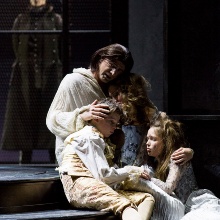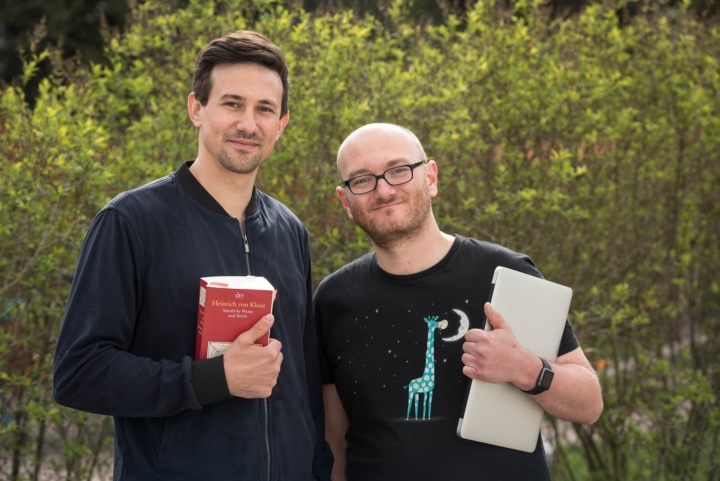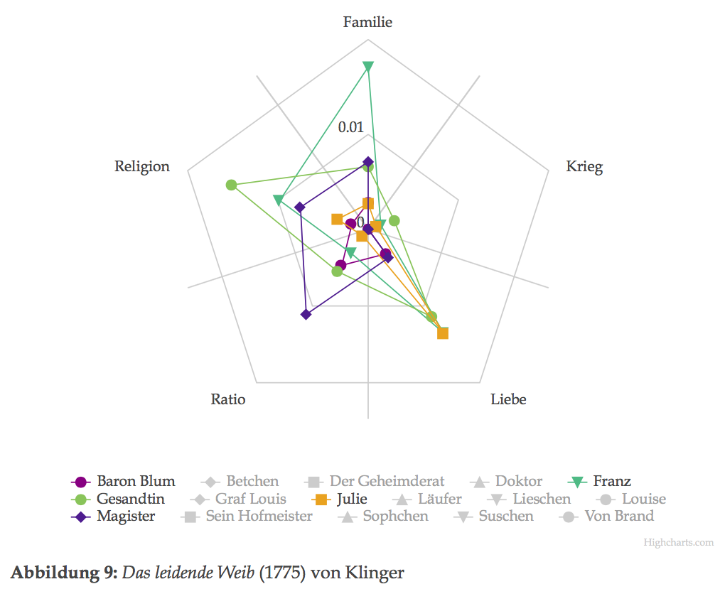To what extent has Shakespeare influenced German drama? How do gender roles in stage plays change over time? First and foremost, answering questions such as these involves a lot of footwork for scholars of literature, who have to read and interpret every single text, whereby the most frequent limiting factor is simply time itself. And this is where computational linguistics can help. Digital tools developed in this field can be used for the rapid analysis of numerous texts at once. That is also the goal of the two young researchers running the QuaDramA project at the University of Stuttgart.
Dr. Nils Reiter of the Institute for Natural Language Processing and Dr. Marcus Willand of the Modern German Literature II Department at the Institute of Literatures launched the Quantitative Drama Analytics project (QuaDramA) to produce new research results for the fields of Computational Linguistics and Literary Studies. In the course of the project, the two researchers, both in their mid thirties, intend to analyse texts, or more precisely 600 dramas, produced between 1740 and 1920. “From the perspective of students of literature”, Dr. Willand explains, “the exciting thing about this project is that up to now we’ve only ever been able to consider small excerpts from all the literature that actually exists. But 600 texts gives us a lot of material to work with, for example to trace the development of historical continuous forms.” Using the tools of both disciplines, the team want to study such things as the types of figures that occur in these pieces and how they interact and develop. The novel aspect of this approach is that, rather than simply interpreting various dramas, it also enables specific textual characteristics to be counted or otherwise quantified.
Starting point: A Real Drama
“These texts are interesting from a technical perspective, because they have a pronounced structure”, says computational linguist Dr. Reiter. “We have acts and scenes, and we know who speaks and when.” The inclusion of literary texts in computer- based analyses, which have usually focused on newspaper articles thus far, is something new. That is why existing programmes will be combined and novel digital tools developed for the QuaDramA project. For many years Literary Studies have been focused on just a few works of significant authors such as Goethe, Schiller and Gottsched says literary scholar Dr. Willand, who explains that: “There has been an ambition to consider texts outside of this canon since the 1970s.”
Analysis of father's role is possible
So, how can dramatical texts be exploited, for example, to enable historians to extract the information that may be hidden between the lines? For example, how did the role of the father develop in the course of the 18th century and when did the patriarch morph into a loving family father? “By analysing specific character roles in a large number of works produced during a given period”, Dr. Willand explains, “we can better understand the concomitant social changes.”
This opens up a new approach for Dr. Reiter too, who is interested in comparing specific characters, whereby the question as to who should be compared to whom inevitably arises. “So”, he explains, “we decided that we need characters that were created for specific roles based on such categories as, for example, gender or age, but also their part in the plot, their social role and similar things.”
The software tool will sort the various characters by type to reveal similarities and changes that have thus far remained hidden. “Until 1750, tragedies were always set in the courtly milieu and the father figure was either a king or heir to the throne”, Dr. Willand explains. “After that, the typical setting is moved to the world of the bourgeoisie. Now, we could look at the father’s interlocutors: does he speak to his sons or his daughters? And how does he talk – does he use more of a martial or an affectionate vocabulary?
Tracking Shakespeare
Doctors Reiter and Willand are currently working on an article that addresses the importance of William Shakespeare for German drama. They are looking into the question of the English playwright's influence on the authors of the so-called Sturm-und- Drang (storm and stress) period in the second half of the 18th century. “The Sturm-und-Drang authors noted that Shakespeare developed his characters based on naturalistic models and that they were, therefore, not artful”, says Willand. “But the question is: how could one measure that?” To answer this question, the two researchers want to analyse linguistic features, such as the language used by specific characters and their share in the dialogue, rather than simply focusing on the purely structural data.
Reiter and Willand have already completed some important groundwork. They have developed a method that enables the supplementation of structural data with a computational linguistics based analysis of the speech of specific figures. One aspect of the modern approach to the so-called Digital Humanities is to use digital networking to make research results available to research communities as they are still being processed. The two researchers use the “quadrama.github.io” blog for this.
Doctoral students and research assistants are working on a software tool
are in a position to pay for two doctoral students and a number of research assistants to help with the QuaDramA project. One of their main tasks over the next three years will be to programme a software tool that can resolve co-references, for example, when various linguistic structures, such as a functional title, a proper name or a personal pronoun, refer to the same character . The purpose of the algorithm will be to keep track of and precisely assign such co-references throughout changing characters, scenes and stage directions.
To this end, the researchers mark specific points in the sample texts and feed them into the algorithm, which then uses what it has learnt to process new texts. Mastering this challenge will move the research group closer to their ultimate objective, which is to be able to automatically identify and analyse specific figure types in a large number of dramatic texts in short order. The information thus gleaned will then be used to comment upon the significance of the individual works in the historical development of the drama genre – perhaps even without having ever read them! Daniel Völpel




